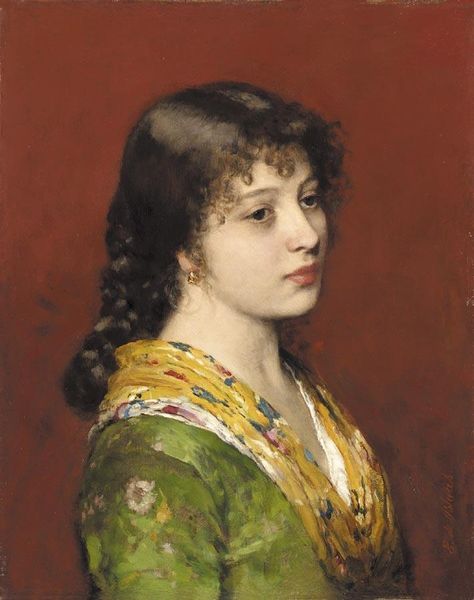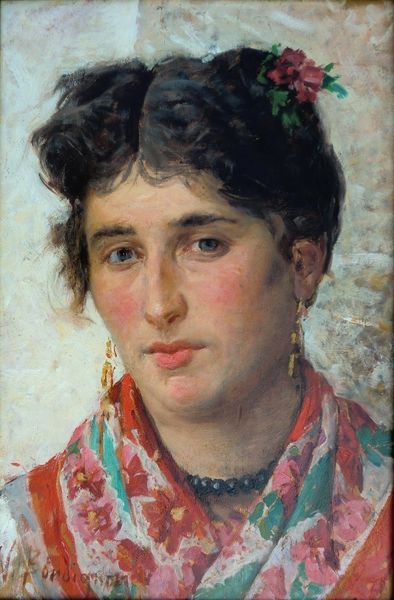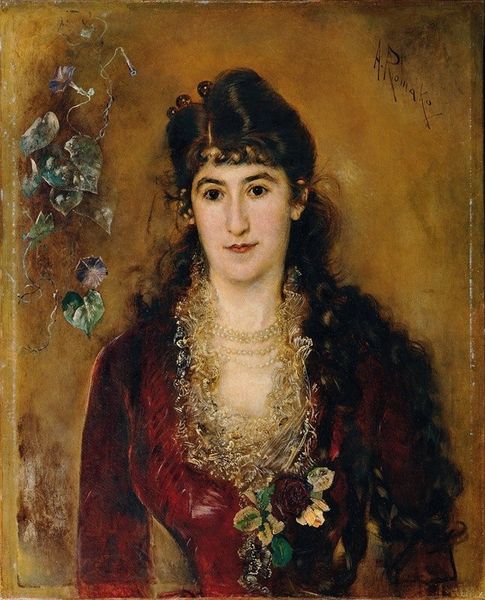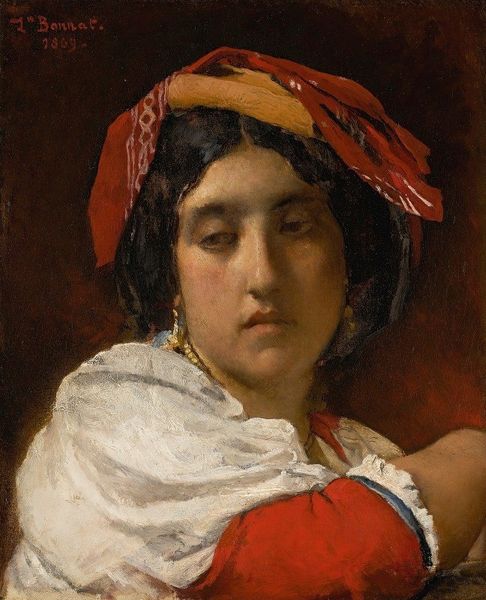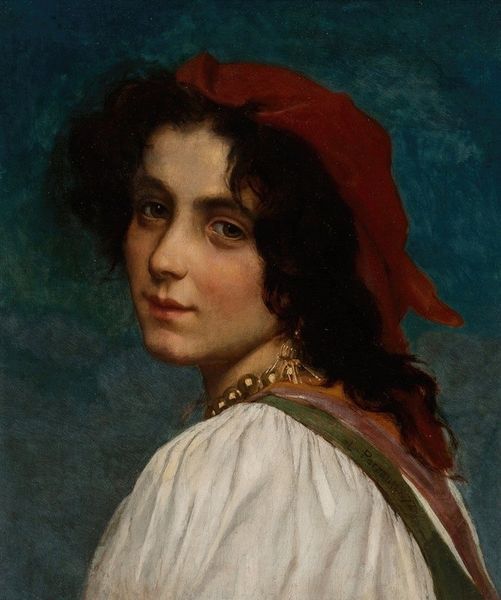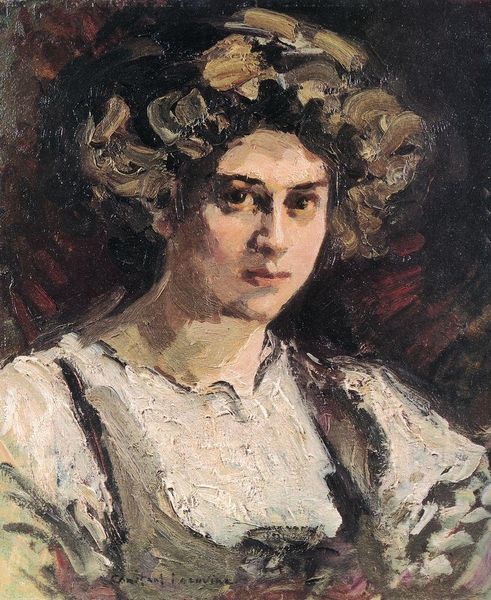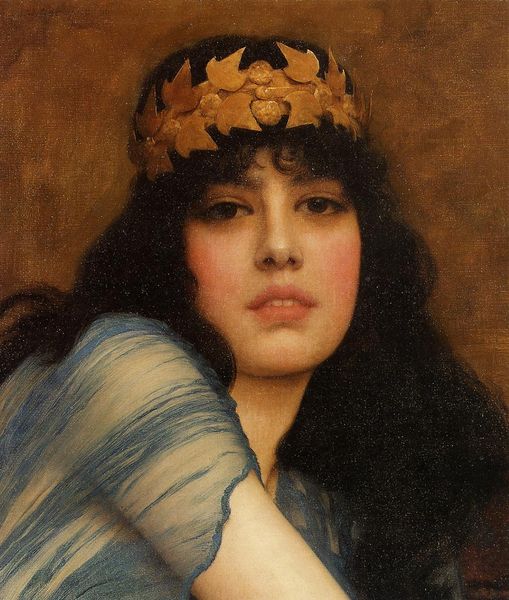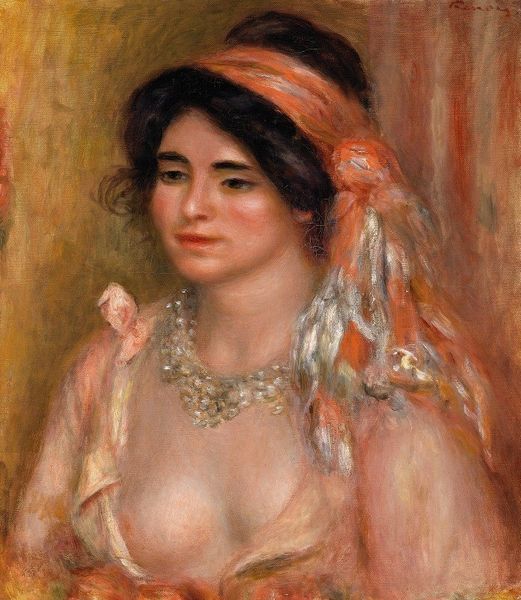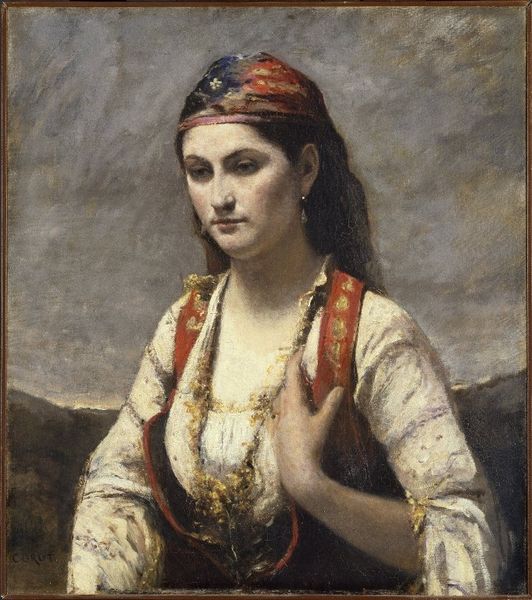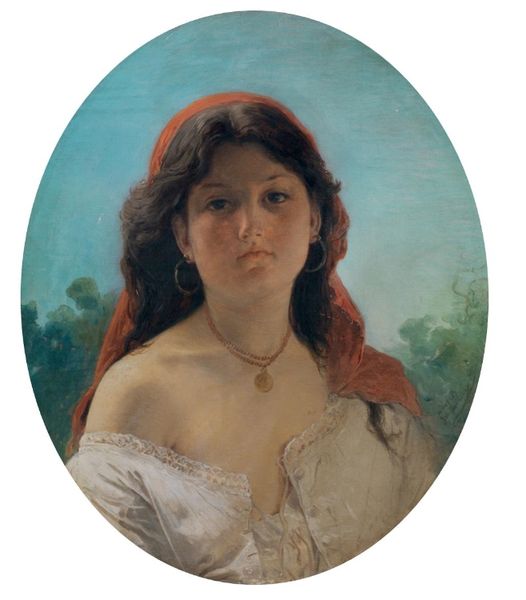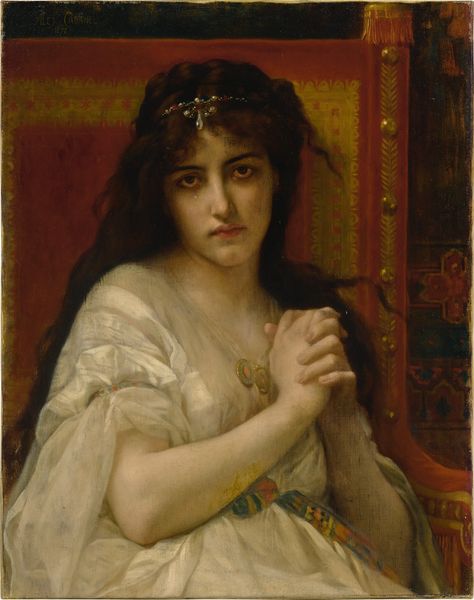
oil-paint
#
portrait
#
oil-paint
#
oil painting
#
genre-painting
#
realism
Dimensions: 51 x 40 cm
Copyright: Public domain
Editor: Here we have Joaquin Agrasot’s “A Gypsy Lady,” an oil painting that gives us a glimpse into a portrait of a woman whose expression is hard to place. It's quite striking with her elaborate jewelry. What do you see in this piece? Curator: I see a wealth of cultural symbols. The large, circular earrings, for example, might represent wholeness or cyclical time, concepts that resonate deeply within nomadic cultures and their connection to the earth. What do you make of her gaze? Editor: It’s almost like she's lost in thought. The way her eyes are focused, not directly at anything, makes me feel like there’s a story there. Curator: Precisely! Consider how "gypsy" imagery has historically been romanticized and othered. The necklace and headband are probably visual cues tied to exoticism, feeding into stereotypical portrayals rather than providing true cultural insight. Do you notice any element which seems “off”? Editor: I do see it! While the painting aims to capture her beauty, her blank stare is not allowing her personality to shine, which is somewhat upsetting considering that this woman is an individual, just like any of us! Curator: Exactly, she becomes a symbol rather than a subject. Perhaps the painting reflects the era's attitude toward marginalized groups more than it reflects her identity. I see you got the point. What did you find the most interesting element of the painting? Editor: Thinking about it this way helps me recognize the dangers of stereotypes and appreciate how much art is a product of its time. It's more than just an image; it's a reflection of society. Thanks for the perspective! Curator: It’s been enlightening to consider how historical memory can be embedded and, at times, distorted through such visual representations!
Comments
No comments
Be the first to comment and join the conversation on the ultimate creative platform.
